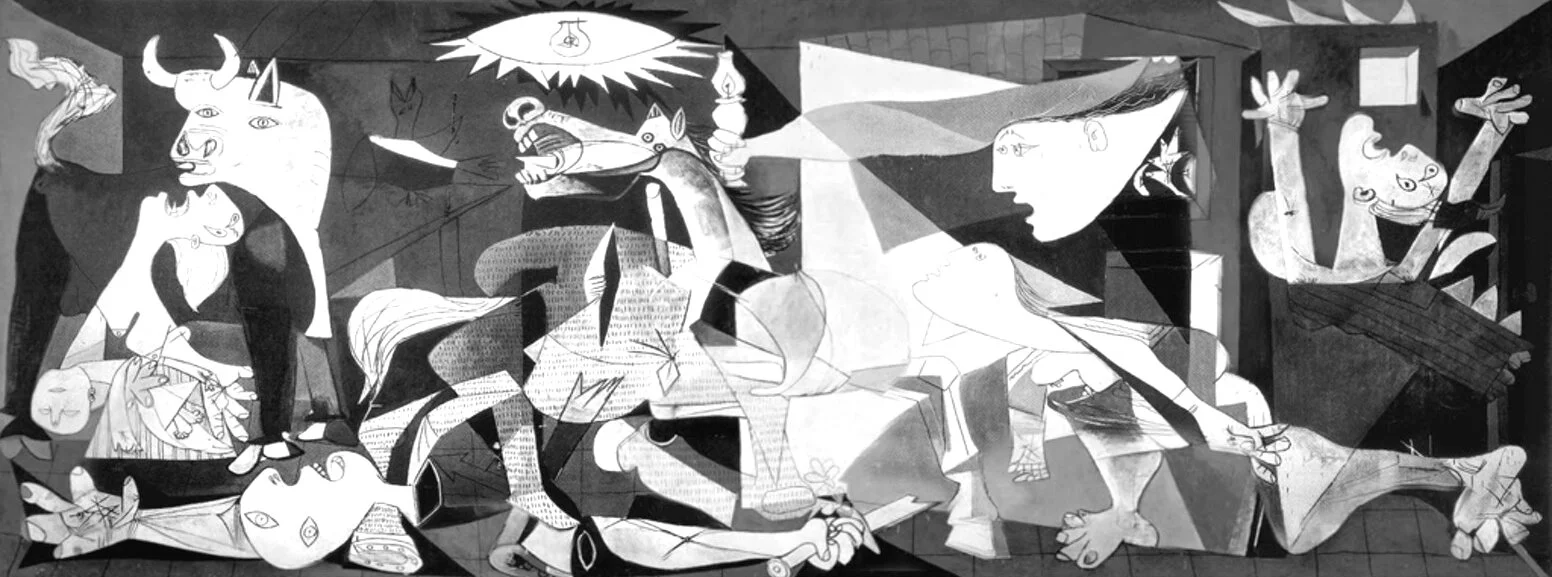España
Museo Nacional Centro de Arte Reina Sofía is Madrid’s cultural centerpiece. Featuring a sublimely wonderful collection of 20th century art, it is home to one of the most famous paintings ever created by Pablo Picasso: Guernica. Painted in 1937, it was a powerful anti-war statement following the bombing of the Basque town of Guernica by German and Italian war planes. The artwork’s power is staggering. Worldwide, a visit to see the painting is a coveted experience for those who love modern art.
Montreal
I’d left the United States twice during my lifetime before 2016. Both trips took me to French Canada. Once in 1988 and another ten years later. With those exceptions, my travel was limited to thirty-five states, with notable visits to every great art museum in the lower forty-eight. While in Canada, during my first trip, I saw a Montreal Canadiens hockey game in the original Montreal Forum which, while not a museum, is a destination of significant cultural impact.
At the time, a passport was not required to visit the Great White North.
Passport
My oldest son has traveled to forty-five countries. Three different times he’s lived abroad for one year. At last count, he’d flown through thirty-four different international airports on five continents. His fluency in multiple languages astonishes me. He’s taken the Trans-Siberian Railway from Moscow, across the Gobi Desert, onward to Beijing. Algiers, Paris, Tokyo and Buenos Aires have all welcomed him.
During one of his year-long trips abroad, he invited me to visit him in Bologna, Italy.
I got my first passport.
Twenty-two hours
I booked the least expensive flight I could find. Travel time between Philadelphia and Bologna was scheduled for almost one full day with a single eight hour layover in Madrid. My son suggested that, upon arrival at Madrid-Barajas Adolfo Suárez Airport, I take the train into central Madrid for a quick visit. As a seasoned traveler, he suggested that I’d have plenty of time.
I arrived in Spain at 8 a.m. local time. Exhilaration and exhaustion followed the lines and curves of the terminal’s ceiling. Navigating was surreal.
Keeping my bags at the airport, I walked through customs and found my way to the train I’d researched two weeks before. Forty minutes later, I exited into a brilliant sunlight like none I’d ever felt.
It felt white.
Sofia
The quiet of the Reina Sofia’s interior is special. Perhaps the silence of another language unspoken is different than that of my native silence. Having spent hundreds of hours in art museums throughout North America, I’d never felt anything like the sun, air and silence of this museum.
Guernica explodes when you enter the gallery. It is 25 ft wide and 11 ft high. Occupying an entire gallery, the painting is never alone. It demands a viewer explore the violent narrative. Agony is obvious. It consumes an entirely different kind of silence. Suffering depicted in such a compelling manner that the painting becomes something other than art.
I was moved.
>
Following my visit, I found a small park across the street from the museum. The sun was more brilliant than when I arrived. I leaned against a brick wall, closed my eyes and felt my skin warm wonderfully for a few moments. What was planned to be a visit to a museum evolved into a life experience that could never have been planned. The moment was powerful and perfect.
Several hours later, I returned to the terminal and began boarding for the final leg. Not having slept in twenty hours, I deplaned in Bologna into a hug from the son I hadn’t seen in six months.
I told him about the silence. He told me that, in all of his travels, he’d never left the airport no matter the length of the layover. I had misunderstood and had a transcendental experience, having simply set out to see a piece of art.
An accidental Hajj.
—

